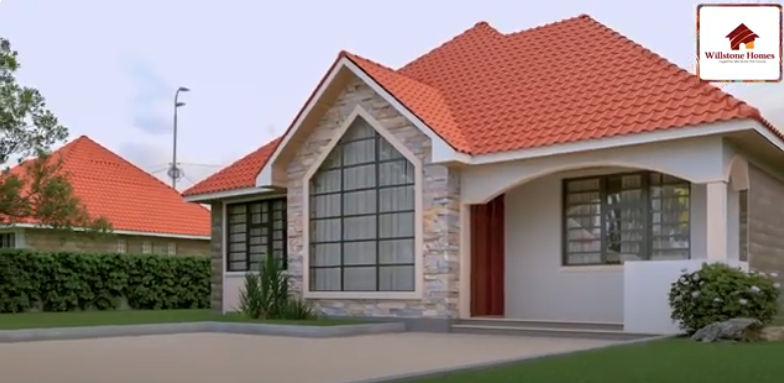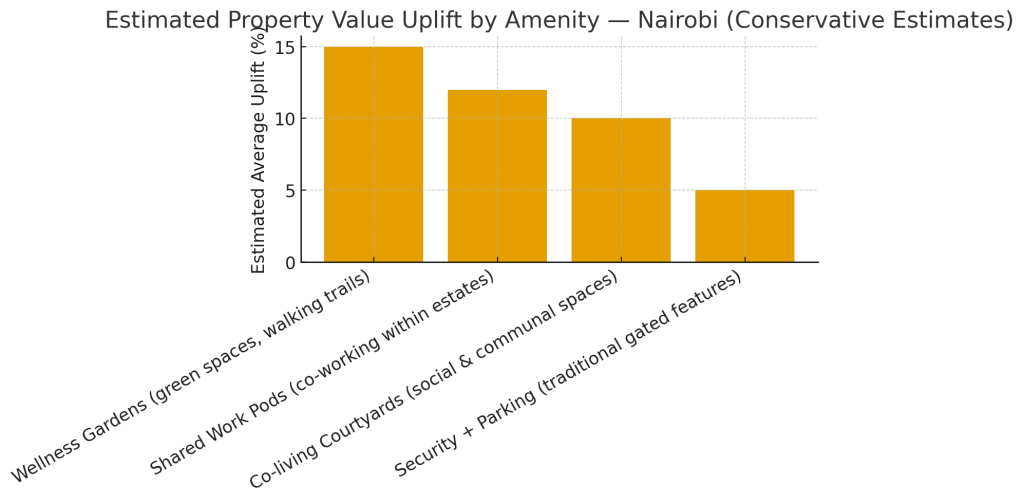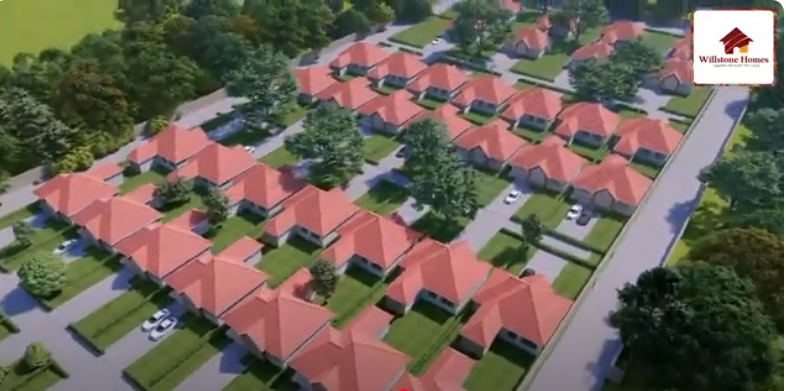In Nairobi and other fast-growing urban centers, property buyers are no longer swayed by walls, roofs, and square footage alone. Increasingly, community-centered amenities in Kenya—such as shared work pods, wellness gardens, and co-living courtyards—are becoming the real determinants of property value. Developers who fail to integrate these emerging lifestyle assets risk being left behind in a market that is rapidly evolving.
Why Community Amenities Matter
Unlike a decade ago, where gated security and ample parking were considered luxuries, today’s property buyers demand experiential spaces. According to the Kenya Property Developers Association (KPDA, 2024), 64% of urban buyers say access to shared amenities influences their decision more than house finishes.
- Shared Work Pods: With remote and hybrid work on the rise, developments with co-working spaces are appreciating faster than conventional estates.
- Wellness Gardens: Research by the World Health Organization shows that access to green space can increase life satisfaction by 20%, a fact mirrored in Nairobi’s leafy suburbs where values remain resilient.
- Co-Living Courtyards: In high-density areas like Kilimani and Westlands, shared social courtyards have become magnets for younger buyers seeking community living.
Read Also: Willstone Homes – When Stone Becomes Immortality, and Real Estate Turns into Empire
Data Snapshot: How Amenities Affect Property Value in Nairobi
| Amenity Type | Avg. Value Uplift (%) | Example Nairobi Estate | Buyer Appeal (%) |
|---|---|---|---|
| Shared Work Pods | +18% | Two Rivers Live-Work Lofts | 70% |
| Wellness Gardens | +22% | Tatu City Green Quarters | 75% |
| Co-Living Courtyards | +15% | Kilimani Co-Living Apartments | 68% |
| Conventional Security + Parking | +7% | Older Gated Estates, South B | 45% |
Source: KPDA, HassConsult Market Trends Report 2024

Chart: Buyer Priorities When Choosing Property in Nairobi (2024)

Read Also: Why Design Visioning Safeguards Property Value
The Nairobi Example: From Concrete to Community
Developments like Tatu City and Konza Technopolis are actively embedding community-centered amenities into their masterplans. Rather than selling homes as isolated units, they package entire lifestyles—complete with social spaces, walkable gardens, co-working hubs, and shared recreational zones.
Such estates command 15–25% higher premiums compared to conventional housing, according to HassConsult’s Q2 2024 real estate index. The logic is simple: buyers see long-term utility and resale advantage in homes that offer more than just walls.
The Investment Angle
For investors, integrating community amenities in Kenya is not just about market appeal—it is about safeguarding future liquidity. Homes without such features may quickly depreciate as the next generation of buyers demands sustainable, connected, and wellness-focused living.
Beyond Four Walls
The Kenyan housing market is experiencing a paradigm shift. As Nairobi densifies and urban culture evolves, community-centered amenities are no longer extras—they are essentials. Developers who recognize this trend are building estates that not only sell faster but also retain higher value in the long run.
In short, the future of property value in Nairobi is not confined to walls but lies in the open courtyards, shared work pods, and wellness gardens where communities thrive.
Read Also: How Artificial Intelligence in Real Estate is Impacting Real Estate Investing in Africa




